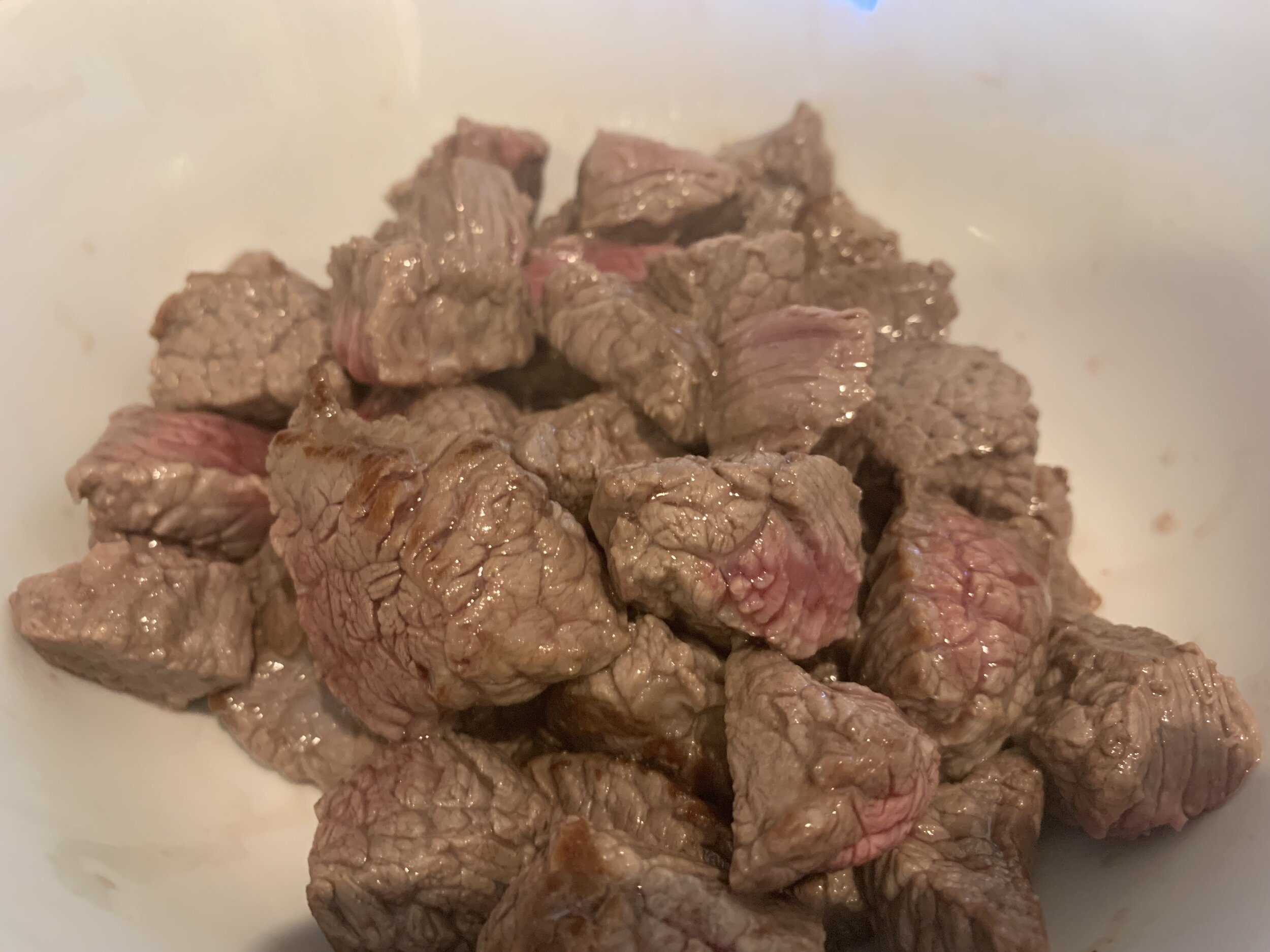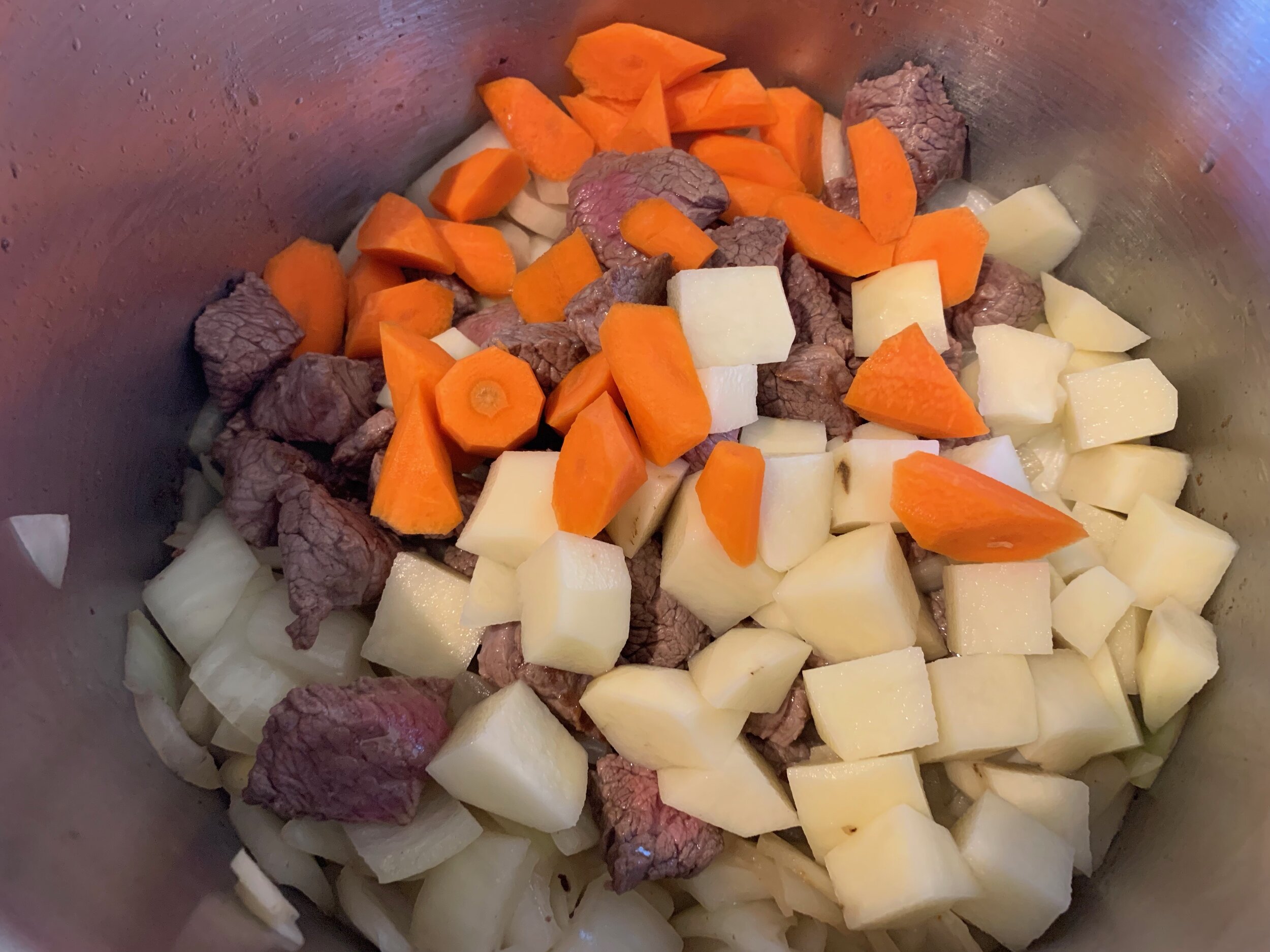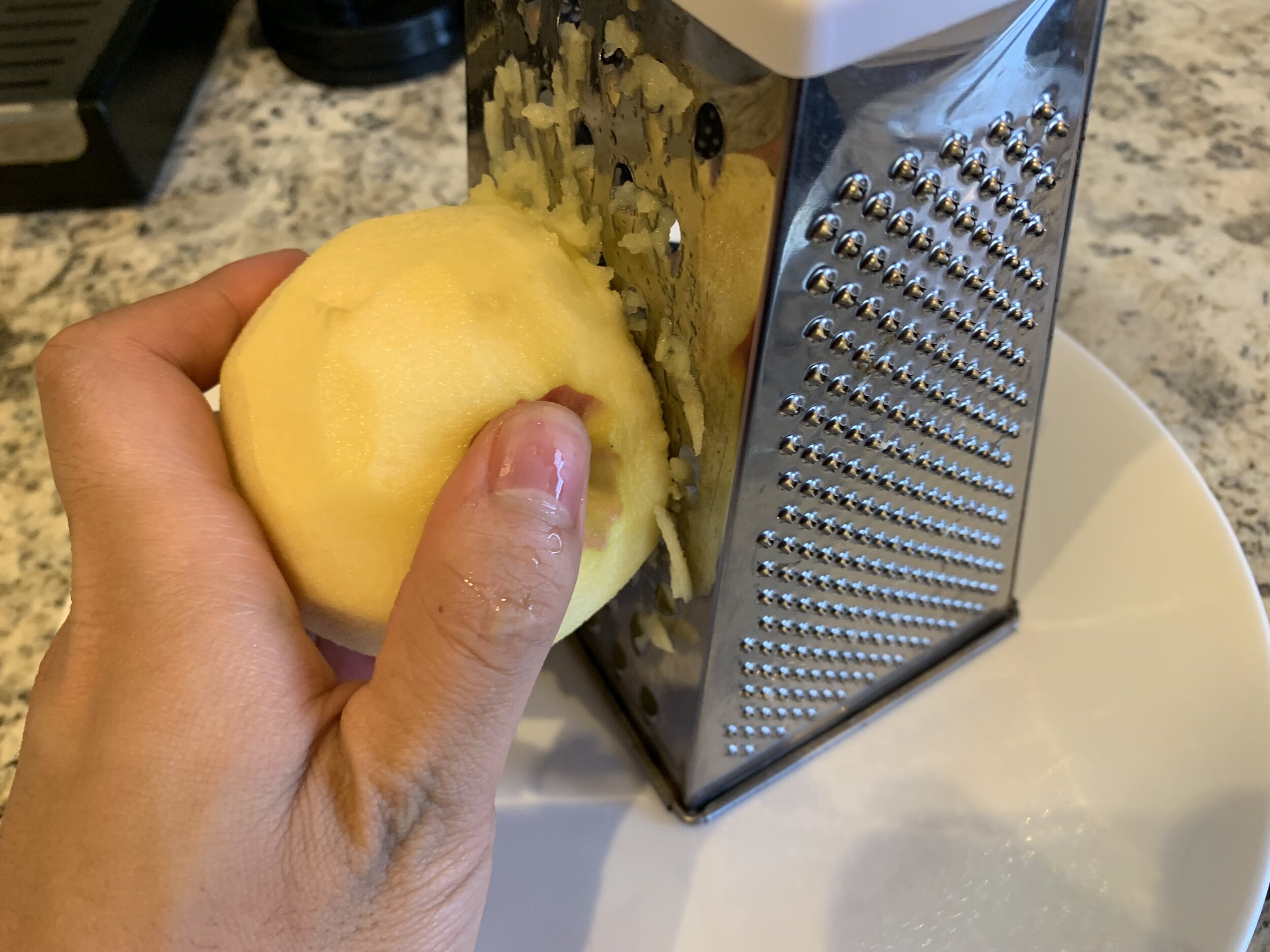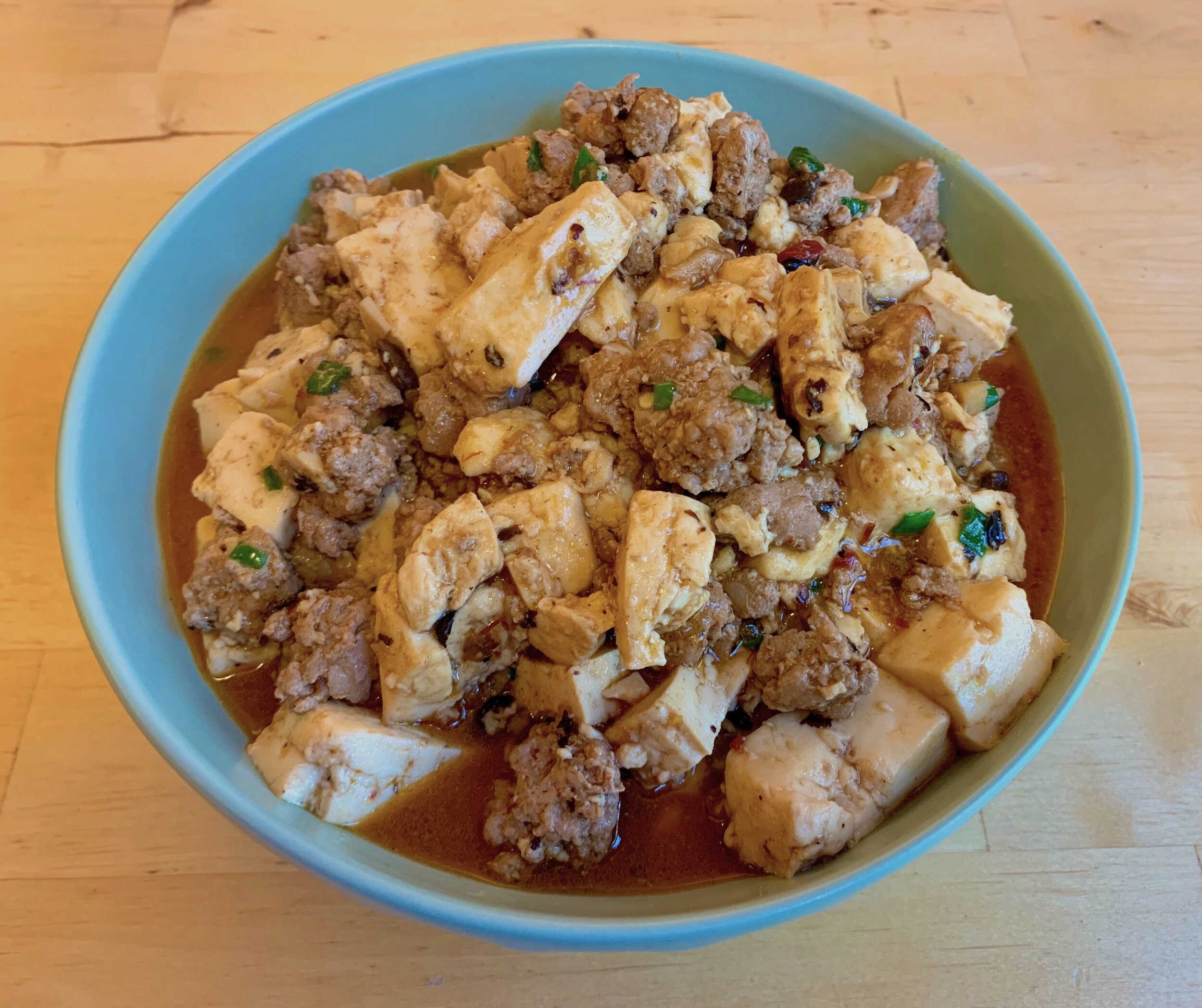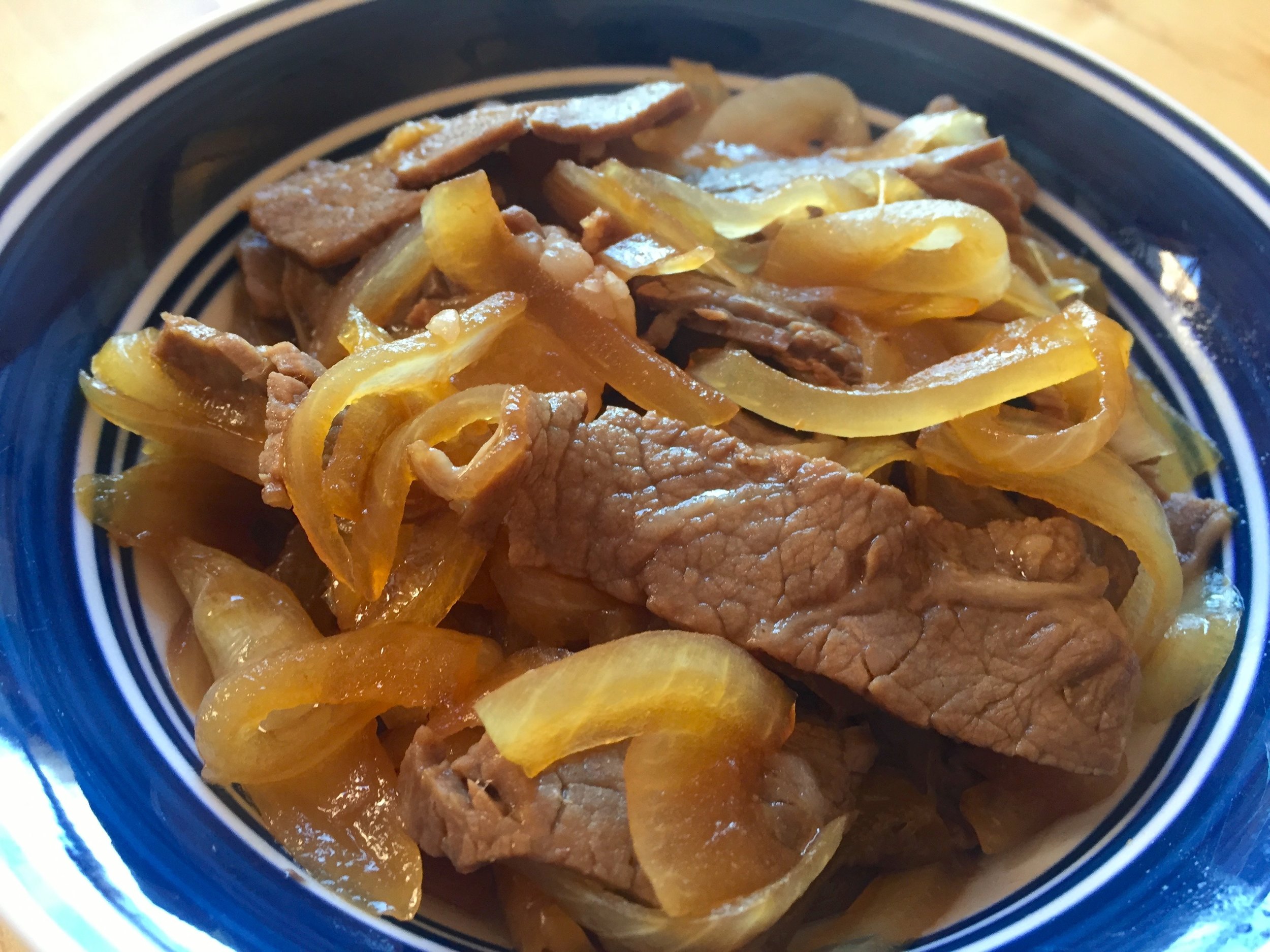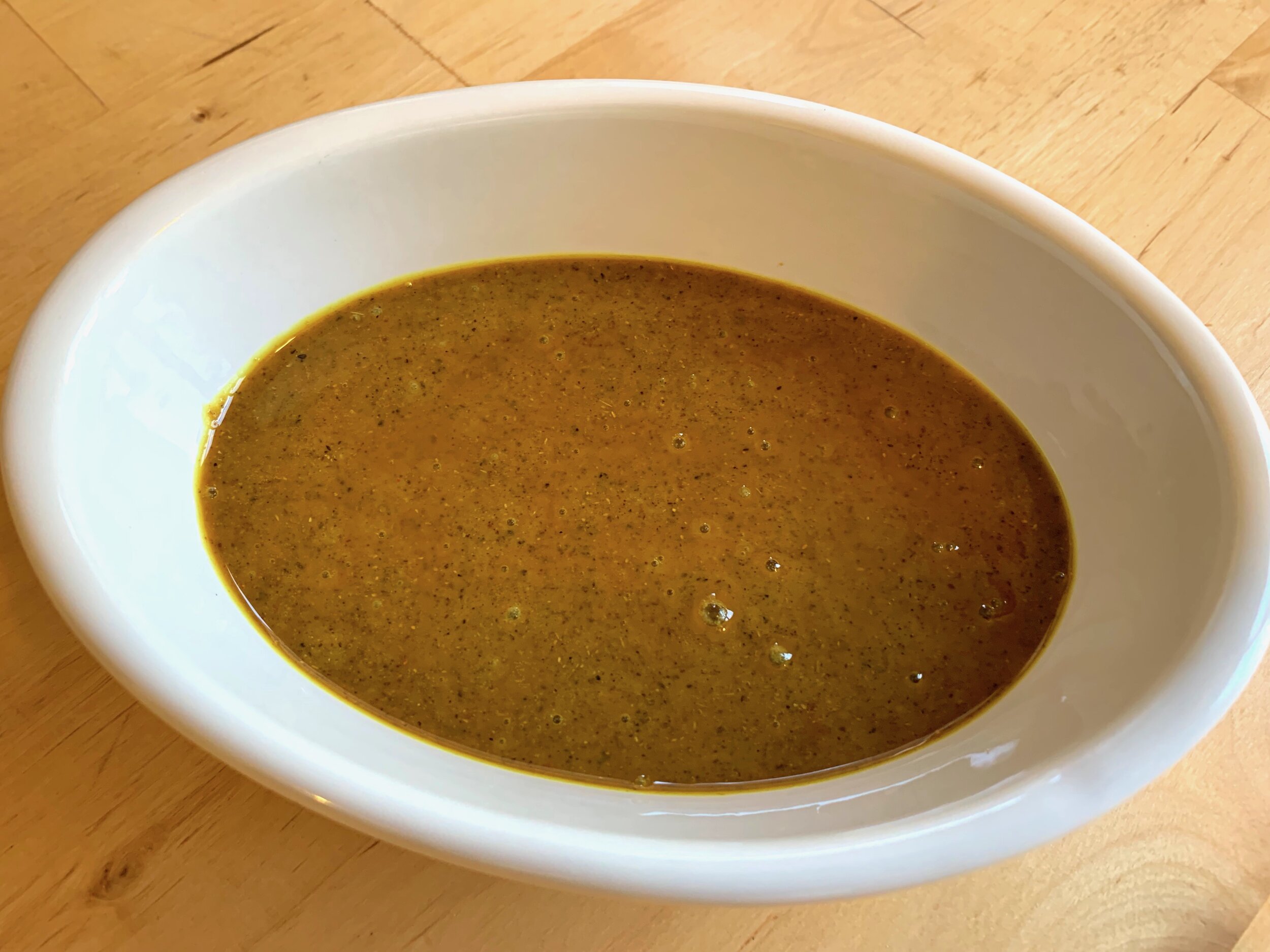Japanese Beef Curry

ビーフカレー (Bifu Kare)
Japanese curry is a hearty and comforting dish—tender chunks of meat, potatoes, onions, and carrots bathed in a thick, spiced, gravy, usually served over rice. Curry is one of the most popular dishes in Japan, currently consumed more often in the country than either sushi or tempura. But how did curry become a Japanese dish? It features many ingredients not often seen in traditional Japanese cuisine, such as potatoes and curry powder. Nor is a stew with a roux-thickened gravy a common sight in Japanese food. One might imagine that the Indian spices in the dish arrived in Japan via Southeast Asia and China, but the composition of the dish, a beef stew with potatoes and onions, fortified with curry powder, has the fingerprints of another island cuisine—that of Great Britain.
An advertisement for curry powder in Victorian Britain.
The story of Japanese curry begins in 18th century India. British traders, soldiers, and officials were exposed to a diverse array of Indian dishes while on the subcontinent, and many returned to Britain with a taste for Indian food. However, they lacked the skills and fresh ingredients needed to recreate Indian dishes. Instead, British food companies began to mass produce an all-purpose curry powder, a mixture of ground dried spices such as turmeric, coriander, cumin, and fenugreek. This mildly spicy powder was used to spruce up a whole range of British dishes, including beef stew. Tender chunks of beef, potatoes, onions, and carrots in a thick, flour-thickened gravy…sound familiar? Add a sprinkle of curry powder and you’re looking at a dish not too dissimilar to modern Japanese curry.
So how did this curried beef stew make its way to Japan? The answer lies at sea. Following the Meiji Restoration, one of the highest priorities of the new Japanese government was to establish a modern navy. After all, it was hostile Western warships sailing into Edo Bay that had forced the end of Japanese isolationism. The Japanese modeled their navy on the British Royal Navy, co-opting everything from doctrines to uniforms. The British, eager at the time to balance the Russian presence in the Pacific, allied themselves with the Japanese, providing the burgeoning Imperial Japanese Navy with training and advice. Most importantly, the British also let Japan buy modern battleships from British shipyards. [1]
Battleship Mikasa was built at the turn of the century for the Imperial Japanese Navy by the Vickers Yards in Barrow-in-Furness, England, based on the design of the Royal Navy’s Formidable-class. She served as Admiral Togo’s flagship at the Battle of Tsushima. Decommissioned in the 1920s, her condition deteriorated in the years after World War II, but she was saved by a post-war restoration effort notably supported by Admiral Chester Nimitz, commander of the US Pacific Fleet during WWII. Mikasa is now open to the public as a museum ship in Yokosuka, the last surviving example of a pre-dreadnought battleship anywhere in the world.
The Japanese fleet grew quickly in both ships and manpower, attracting recruits with good pay and good food—sailors were offered unlimited white rice for enlisting. [2] This had unexpected consequences when sailors started suffering from beriberi, a medical condition caused by low levels of thiamine (Vitamin B1). [3] Beriberi is a condition caused most often by a diet of mostly white rice, which contains no thiamine. Searching for a solution, the Japanese Navy turned once again to its British mentors. From them they picked up a recipe packed with meat and root vegetables, both sources of thiamine—curried beef stew. The dish had become a staple of the Royal Navy, as it could be made simply from hardy ingredients and easily served to a large crew. Soon, ships of the Imperial Japanese Navy were regularly serving beef curry over rice.
Over the years, the Japanese version of curried beef stew diverged from its British ancestor. Japanese cooks began replacing the red wine and beef broth in British versions of the dish with a lighter mixture of dashi and chicken stock. Sailors returning to civilian life brought Japanese curry with them. [4] Meanwhile in Britain, curried stews had fallen in popularity, supplanted in the second half of the 20th century by the genuine article as waves of Indian and Pakistani immigrants arrived in Britain, bringing their food with them.
In Japan, on the other hand, the popularity of curry, which could be made from humble ingredients, soared in the hard years following their defeat in World War II. What was left of the Imperial Japanese Navy was dissolved in 1945, but Cold War pressures soon compelled the United States to resurrect a local naval force to help defend the Pacific from the Soviets. The new Japanese Maritime Self-Defense Force (JMSDF), founded in 1954, carried on many of the traditions of the old navy, including its love of curry. Today, curry is served on JMSDF ships every Friday, with many ships cooking up unique recipes. [5]
The characteristics which made this dish appeal to two navies—a hearty, reasonably nutritious meal that can be prepared easily in bulk from cheap ingredients—also make Japanese curry a hit at home. It can serve a large family from a single pot, and can be made in advance and packed for lunch or frozen. Japanese curries are made with a variety of proteins, including beef, chicken, and pork. This recipe uses the more traditional beef, but can be readily adapted to any of these proteins. You can use either homemade Japanese curry roux or store-bought curry roux blocks in this recipe.
Ingredients
1½ lb beef stew meat, cubed
1 Russet potato, cubed
2 carrots, chopped
2 onions, chopped
2 cloves garlic, sliced
2 cups chicken stock
2 cups dashi
4 oz Japanese curry roux
1 tbsp honey
1 apple (optional)
Vegetable oil
2 tsp salt, or to taste
We will be using beef stew meat in this dish. The collagen and connective tissue will break down during the slow cook, rendering this meat tender. You can also choose to use beef chuck (most stew meat is chuck or round anyway). Cut the beef into 1 inch cubes, and prepare the vegetables. Peel the potatoes, cut them into ¾ inch cubes, and soak them in a bowl of cold water. This rinses off some of the surface starch from the potato pieces, helping them to later cook without sticking to one another. Set the potatoes aside until ready to cook with them. Cut the onion into ¾ inch pieces as well, and chop the carrots into similarly sized pieces.
In a large pot suitable for stewing, heat 1 tablespoon vegetable oil over high heat. When the oil is hot, add the beef pieces. Make a single layer of beef in the pot, working in batches if your pot is too small. We want to develop a good sear on the beef, which will add to the flavor of the eventual gravy. Let the beef fry for 3 minutes without moving it, then flip the pieces and fry for 2 minutes longer. Once the sear is done, remove the beef from the pot and set aside.
Add a bit more vegetable oil if necessary, then add the sliced garlic and onions to the pot. Cook for 5 minutes, stirring occasionally, until the onions have softened and have turned translucent. Then add all of the stew ingredients to the pot—the seared beef, carrots, and potatoes (drained).
Pour over the two cups of chicken stock and two cups of dashi, which should be enough to mostly cover the ingredients. If it doesn’t, add additional stock to the pot until the ingredients are submerged. If you do so, you may have to add additional curry roux as well, at a ratio of 1 oz roux per cup of liquid.
Stir the pot, making sure to scrape any fond from the bottom of the pot. Then bring the pot to a boil, then reduce the heat to a simmer. Cook partially covered for 40 minutes, or until the beef and vegetables are tender. Stir the stew occasionally, scraping the bottom of the pot to ensure that nothing sticks and burns. Skim the surface of the stew occasionally to remove any impurities.
Once the beef is tender to your liking, add 4 oz curry roux to the pot and stir until the roux has dissolved. Add the honey and optional grated apple, both of which add some sweetness to the otherwise very rich curry. Cook for an additional 10 minutes, stirring constantly until the curry thickens. Serve the curry hot, over short-grain white rice.
Substitutions
You can substitute the beef for chicken thighs or pork shoulder to make a chicken or pork curry, or omit meat entirely to make the dish vegetarian. Other vegetables, such as button mushrooms or peas, also work well in this stew.
If you can’t find dashi, substitute it for 2 additional cups of chicken stock, or for water. If you prefer a richer stew, replace the chicken stock with beef stock.
[1] The British built heavy warships for the Japanese from 1871 to 1914, with many private British shipyards making a tidy profit from Japan’s rapid naval growth. Many of these ships proved devastatingly decisive in the Sino-Japanese War and Russo-Japanese War. Japan fought on the side of the Allies at Britain’s behest in World War I, and the Anglo-Japanese Alliance persisted until the 1920s, when the growing Japanese sphere of influence in the Pacific led to rising tensions with the United States and the Asian possessions of the British Empire.
[2] In many Asian cultures, white (polished) rice was historically a sign of affluence, similar to the way white bread was seen in Europe.
[3] Thiamine and its derivatives are required in the human body for proper functioning of the Krebs cycle, a central metabolic pathway. A lack of thiamine therefore inhibits production in the body of many critical biomolecules, including the neurotransmitters GABA and glutamate.
[4] Japanese curry is still most popular in the cities of Kure and Yokosuka, both port cities with long seafaring traditions. Yokosuka hosts a Curry Festival which attracts tens of thousands of visitors annually.
[5] A list of the curry recipes of different JMSDF ships and submarines can be found here.
Recipe
Prep Time: 10 min Cook Time: 1 hr Total Time: 1 hr 10 min
Difficulty: 1/5
Heat Sources: 1 burner
Equipment: large pot
Servings: 6
Ingredients
1½ lb beef stew meat, cubed
1 Russet potato, cubed
2 carrots, chopped
2 onions, chopped
2 cloves garlic, sliced
2 cups chicken stock
2 cups dashi
4 oz Japanese curry roux
1 tbsp honey
1 apple (optional)
Vegetable oil
2 tsp salt, or to taste
Instructions
1. Cut the beef into 1 in cubes, cut the potatoes and onions into ¾ in pieces, and chop the carrots. Soak the potatoes in a bowl of cold water.
2. Heat 1 tbsp vegetable oil in a large pot over high heat. When the oil is hot, add the beef to the pot and brown the pieces, working in batches if necessary. Sear the beef for 3 minutes on the first side, then toss the pieces and fry for 2 more minutes. Then remove from the beef from the pot.
3. Add the onions and garlic to the pot and cook for 5 minutes, stirring occasionally, until the onions have softened.
4. Add the beef back to the pot, together with the chopped carrots and drained potatoes. Pour over the chicken stock and dashi, together with 2 tsp salt. Cover and bring to a boil.
5. When the pot comes to a boil, reduce the heat to low and simmer partially covered for 40 minutes or until the beef and vegetables are tender. Stir occasionally, scraping the bottom to make sure nothing is sticking.
6. When the beef is tender, add 4 oz curry roux and mix until the roux is dissolved.
7. Add the honey and grated apple, then cook for an additional 10 minutes, stirring constantly until the curry has thickened. Serve over rice.



